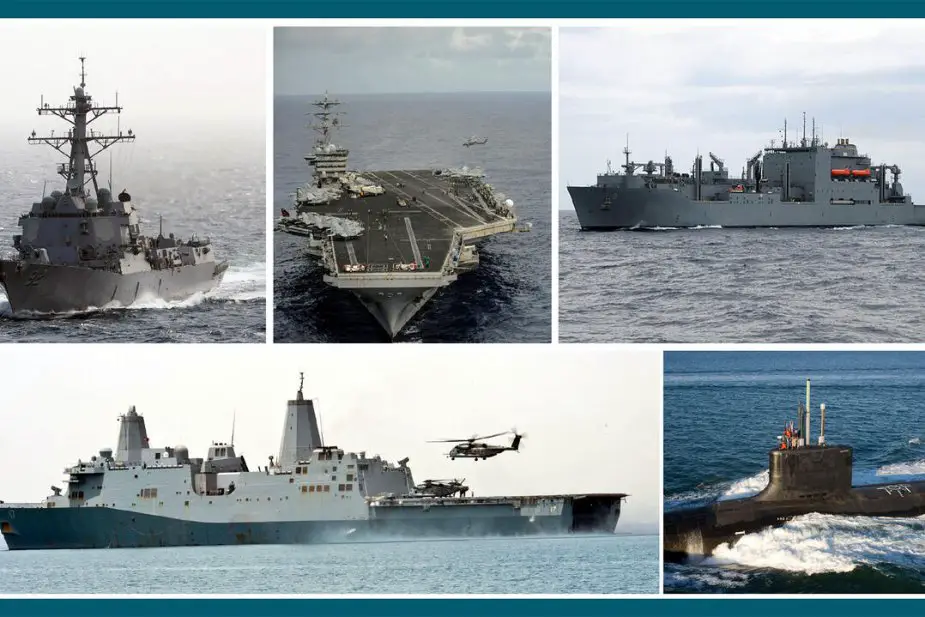Breaking news
Start of construction of future US Navy DDG(X) next gen destroyers postponed to 2032.
The Congressional Budget Office (CBO), a nonpartisan federal agency that provides economic and budgetary analysis to the United States Congress, has released its assessments and projections on the U.S. Navy's revised shipbuilding plans, including the updated schedule for the next-generation DDG(X) destroyers.
Follow Navy Recognition on Google News at this link
 Artist rendering of the US Navy. (Picture source: Congressional Budget Office)
Artist rendering of the US Navy. (Picture source: Congressional Budget Office)
The U.S. Navy's 2024 shipbuilding plan presents a comprehensive vision that seeks to balance the exigencies of present-day naval warfare with the imperatives of future threats and technologies. The Navy's roadmap encapsulates an intricate blend of upgrading existing platforms and commissioning advanced vessels to ensure sustained maritime superiority.
The DDG-51 Flight III Destroyers remain a pivotal part of this plan, with their improved ballistic missile defense capabilities positioned as a key countermeasure to evolving threats.
The integration of the AMDR system represents a quantum leap in surveillance and detection, purportedly offering a nearly 100-fold increase in radar power over existing systems. The ability to generate more electrical power and the enhanced cooling systems are technical modifications that reflect the Navy's commitment to maintaining a technological edge.
As the Navy transitions towards the future, the DDG(X) program stands out. It symbolizes the Navy's next stride in destroyer evolution. The design goals for the DDG(X) outline a vessel that not only exceeds the combat capabilities of the DDG-51 Flight III but also emphasizes a larger hull, which is expected to provide substantial benefits in terms of power, stealth, and future upgrade capacities.
This move anticipates the need for vessels that can adapt to emergent weapon systems and other operational capabilities that may become essential in future maritime confrontations.
The financial implications of the DDG(X) and other new platforms remain a contentious issue, with the Congressional Budget Office (CBO) projecting costs notably higher than the Navy's estimates.
The experience with the Zumwalt class destroyers serves as a cautionary reference, where initial cost projections significantly underestimated the final expenditure. The DDG(X)'s reliance on the proven combat systems and radar of the DDG-51 Flight III may temper some of these financial risks, but the ambitious nature of the project implies that actual costs could deviate from early estimates.
The strategy for small surface combatants, represented by the Constellation class frigates, remains relatively stable across the different alternatives of the plan. These frigates are expected to play a versatile role, bolstering the Navy's capabilities in areas like escort operations, anti-submarine warfare, and surface engagement. The potential upgrade to a Flight II version hints at incremental advancements in combat and weapon systems while retaining the size and fundamental design characteristics.
In the amphitheatre of amphibious warfare, the Navy appears to be re-evaluating its stance. The introduction of new LSMs, light amphibious warships capable of supporting a variety of missions, reflects a shift towards a more dynamic and rapid response force. This evolution in thinking aligns with the broader strategic shifts towards distributed lethality and the need for agile force projection in multiple theatres.
Cost estimates for these ships, particularly the new amphibious assault ships, again illustrate a disparity between the Navy's projections and the CBO's higher estimates. The cost growth factors incorporated by the CBO take into account the historical trends in the shipbuilding industry, suggesting that the Navy's estimates may be optimistic. This difference emphasizes the inherent uncertainty in forecasting costs for such complex and technologically sophisticated vessels.


























